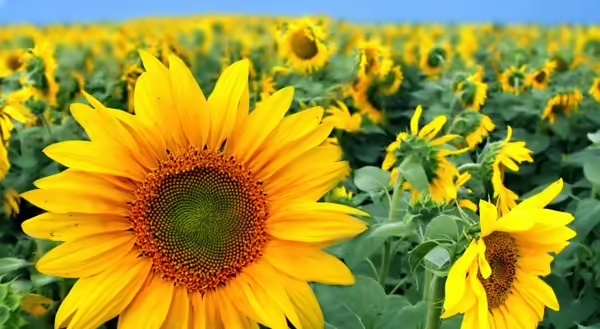
If you love having vases full of fresh flowers around the house, but not the price tag cut flower gardening is for you! A little planning now will have your home full of unique floral arrangements all summer long.
First off, what is a cut flower? A cut flower is simply any flower or flower bud that is cut from the plant and used decoratively in fresh or dried vase displays, wreaths and garlands.
Growing Cut Flowers
- Choose your site
- Choose your flowers
- Plant and maintain your garden
- Harvest your flower
- Arrange and enjoy!
Where should you grow flowers?
- In a sunny spot: Most cut flower plants prefer the sun
- Close to water: Make sure your site has an easily accessible water source
- Somewhere you’ll see them often: Flowers mature quickly, so plant somewhere convenient to be able to cut them at the right time.
- The right soil: It’s always recommended you get a soil test to understand the soil that’s at your site before you plant and any amendments you might need to make. Raised beds are great if you don’t have high-quality soil or you like the convenience. Ground beds are better for large amounts of flowers. Or, you can incorporate cut flowers into your existing landscape to save space. Some flowers need stakes to help them grow straight so consider that when planning a site.
What flowers should you grow?
That depends – do you want to grow from seed or transplants? Seeds are cheaper and more varieties are available, but you need an appropriate place to start seeds indoors. Transplants are more expensive, but they save time and space. Whatever you chose, try to stagger what you plant by bloom times so you always have flowers available.
- Annuals: Many are easy to start from seed ahead of time or to direct seed into a sunny spot in the garden. Examples: Zinnia, Strawflower, Celosia, Gomphrena, Amaranthus, Cosmos, Black-eyed Susan, Sunflowers.
- Bulbs: Many require staking for support. Examples: Spring Flowering: Tulips, Daffodils, Lily of the Valley; Summer Flowering: Dahlias, Gladiolus, Lilies.
- Perennials: Spring Flowering: Hellebores, Bleeding Heart, Peonies, Lady’s Mantle; Summer Flowering: Iris, Liatris, Coneflowers, Eryngium, Poppies, Astilbe, Clematis, Yarrow, Garden Phlox; Late Summer/Fall Flowering: Autumn Joy and Similar type Sedum, Mums, Perennial Black-Eyed Susan.
What type of maintenance is needed in a cut flower garden?
Weeding – you didn’t think you’d get out of this one, did you? To prevent weeds, use mulch, landscape fabric or black plastic. Watering needs will vary depending on what you’re growing. Consider soaker hoses or drip irrigation. Some flower plants may need pinching, disbudding and pruning.
What’s the best way to harvest cut flowers?
This depends on the flower. Some are best to cut as buds or before the blooms fully develop and some are best cut when they’re fully open. It’s best to cut flowers in the late afternoon or evening. Cut the stems longer than you will need and place in cool water for one to two hours to let them take up enough water.
Cut Flower & Care Handling
- Always use a clean container. Use a container that doesn’t have straight sides to make it easier and the proportion should be 1:1 for container to flower height.
- Remove any foliage that will be in the water.
- Use a floral preservative: Sugar, Acidifier, Bactericide. At-home preservatives can be made, but they need to include those components.
- Place in a cool location away from sunlight.
- Change water frequently.
Making a Vase Arrangement
- Fill the container to 1 inch below the top with water and preservative solution
- Create a ring of greens angled out from the container edge
- Add flowers to that outer ring and then continue to work inward until the center is filled last
Looking for more? Illinois Extension has a lot of materials exploring a variety of flower topics:
- Forcing Blooms on Spring Pruned Branches
- Growing Peonies in Illinois
- Handling Cut Flowers video
- Creating a Living Flower Arrangement video
- Small Business of Selling Cut Flowers in Southern Illinois
- Lavender – A must-have plant for all gardens
Source: Illinois Extension State Master Gardener Specialist Candice Hart
Want to get notified when new blog posts are available? Sign up here!
Know How Know More University of Illinois Extension is the original go-to source for growers, DIYers and jacks of all trades. For more than a century, Illinois Extension expert educators have shared university research in communities across the state. Get advice you can trust on horticulture, agriculture and nutrition in the Know How Know More blog. Build your best life. Trust Extension to help.
Doug Gucker is a Local Food Systems and Small Farms educator with University of Illinois Extension in DeWitt, Macon and Piatt counties. He improves producer profitability and sustainability through demonstration and programming focused on using appropriate management strategies, soil health, nutrient management, integrated pest management, cover crops, beekeeping, grazing and urban farming. You can contact him at 217.877.6042, dgucker@illinois.edu or follow him on Twitter at @SoilWaterDoug.
